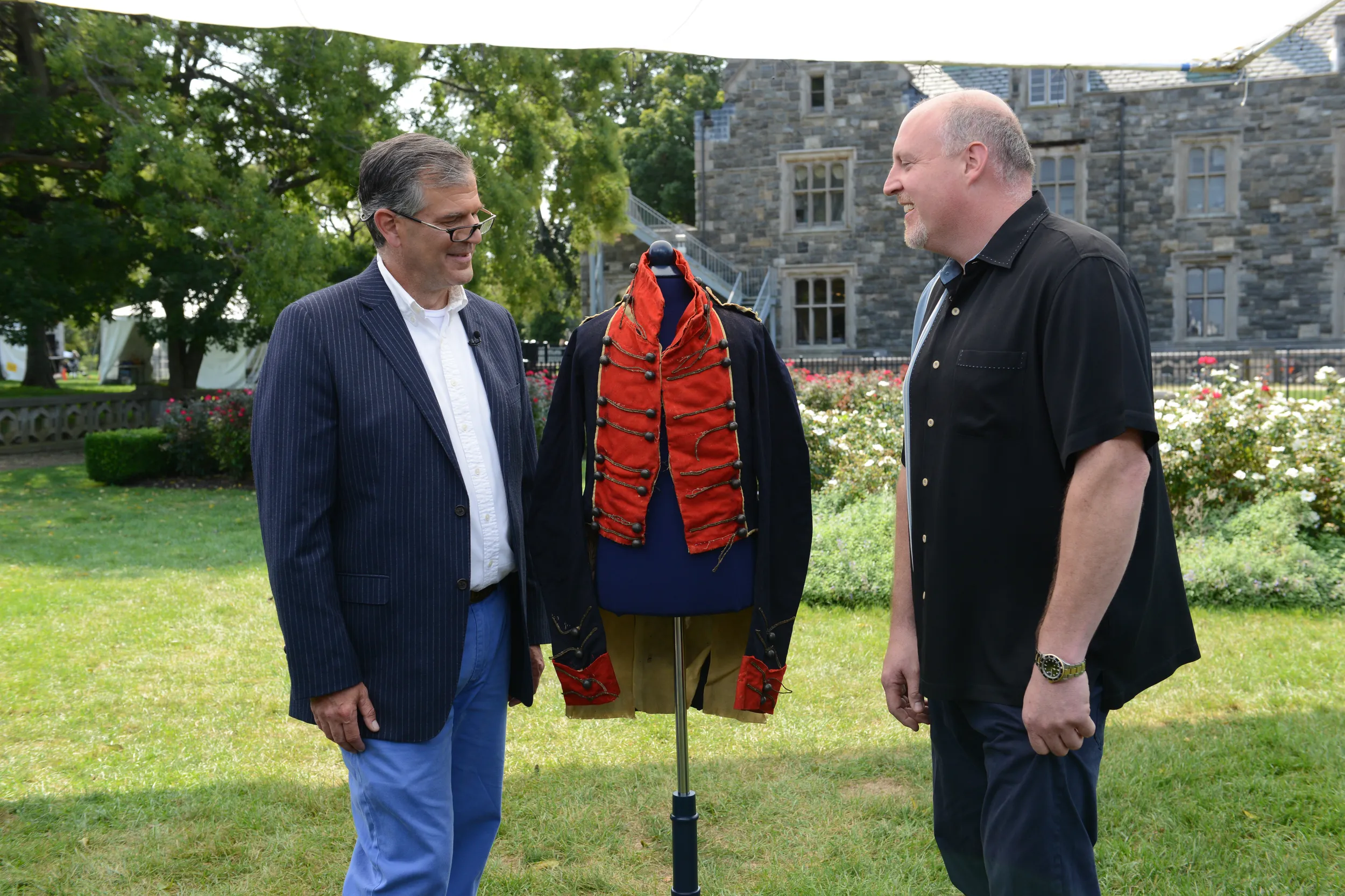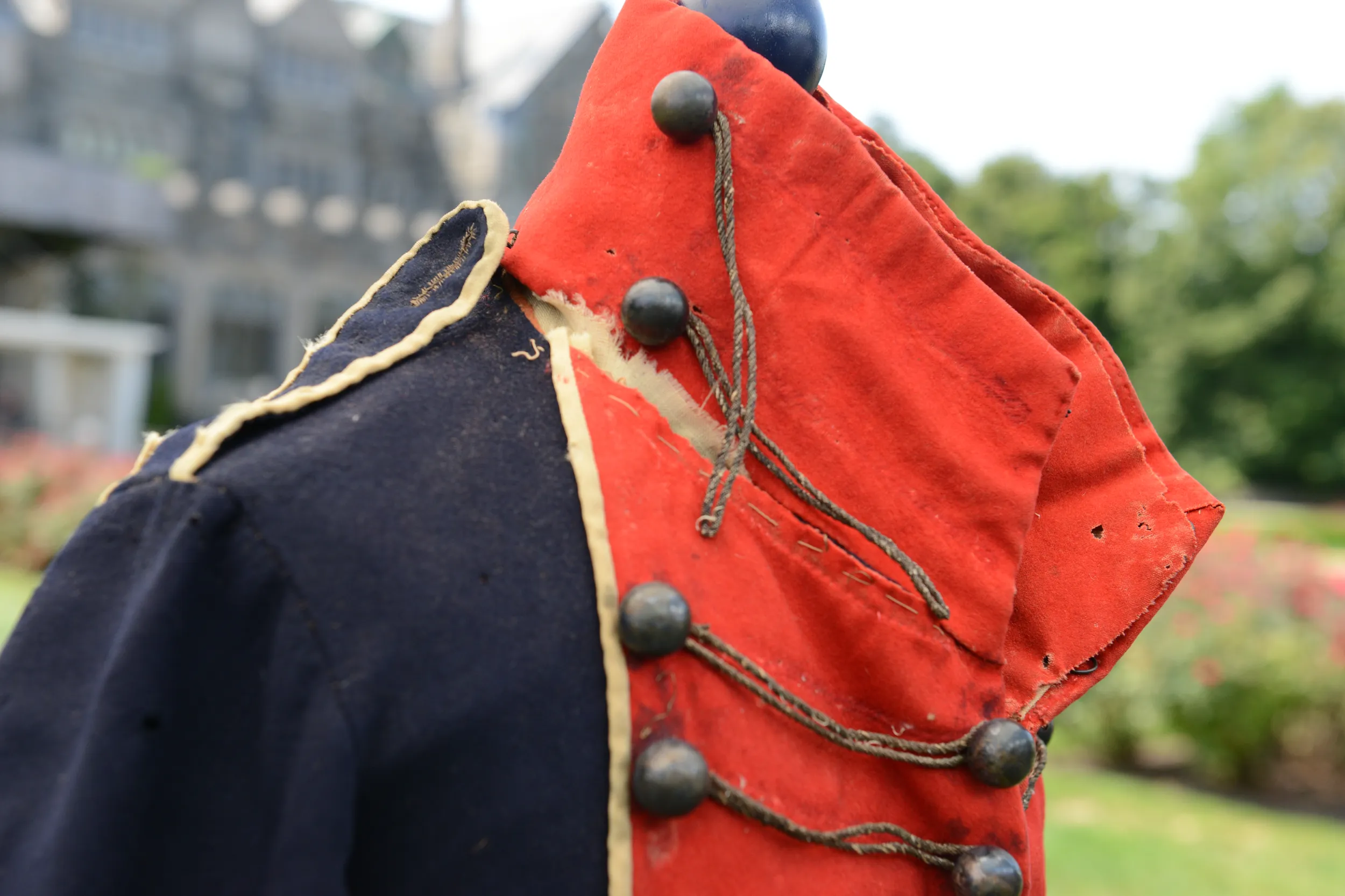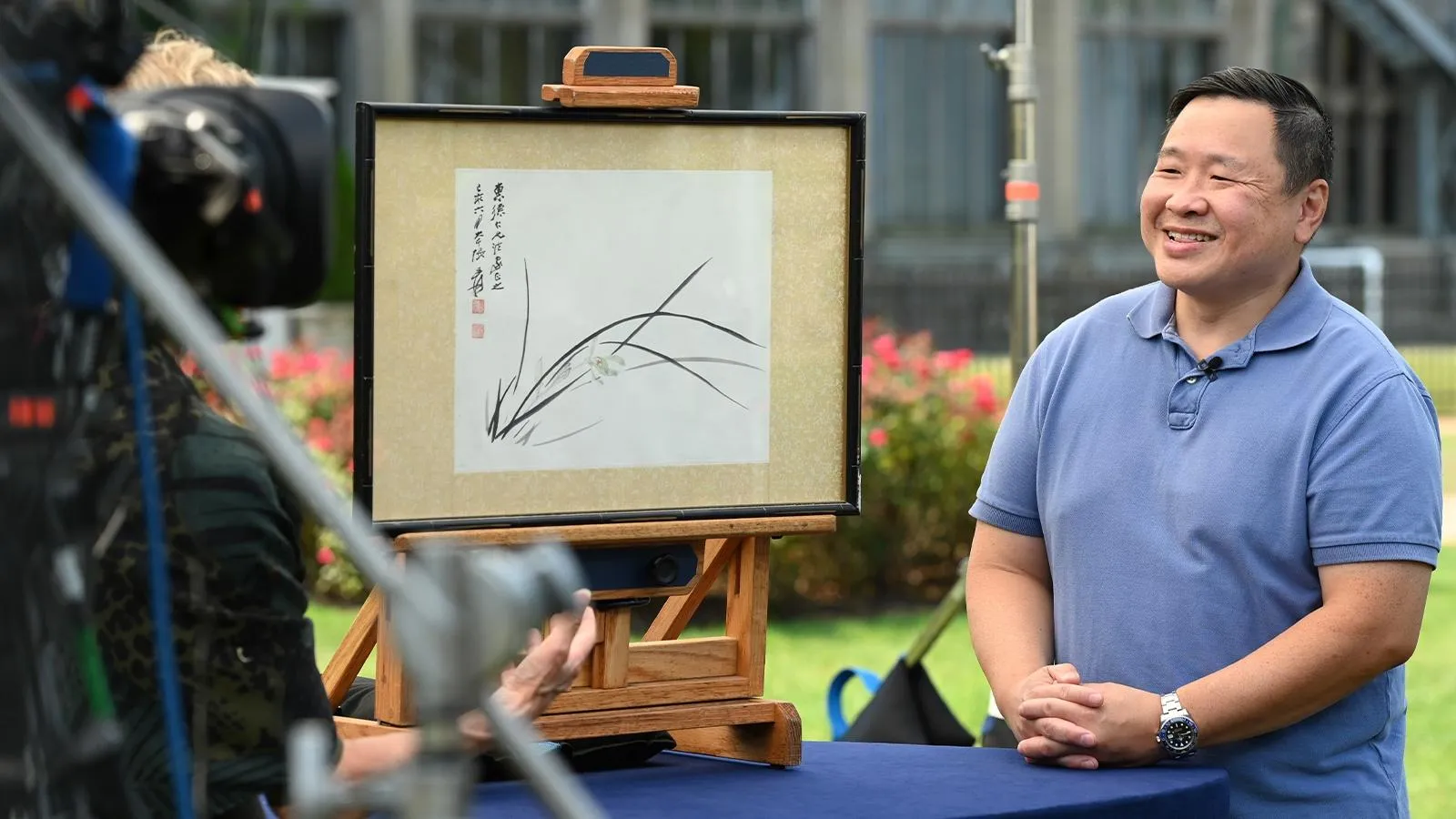Identified New York Militia Coatee, ca. 1812
GUEST: Uh, it is, what I believe, uh, an old military uniform. I think it's, uh, 1812. I'm the president of a local historic house and because of that, I have a lot of, uh, love for historic, uh, items and artifacts. And, uh, one of the local houses was being, uh, sold. It was a privately owned house, and because we have a very good relationship with them, they invited us on to purchase some artifacts. And I went up into the attic, 'cause I love looking, um... And I found burlap sack. So I grabbed the sack, I look in, uh... It looked to me like it was a Santa Claus outfit.
APPRAISER: (laughs)
GUEST: So, now, now, my wife is big into Christmas. Around Christmastime at our house, looks like it threw up Christmas. So I thought that'd be a neat little gift to get her, something, you know, from, from, from back in the day. So I put it back in the sack and, um, I didn't know what I had until a couple days later when I got home.
APPRAISER: And who wore it?
GUEST: I think, uh, I think, uh, Cornelius Bennett wore it. You know, we were looking through the house for, for months before it was sold, and we had purchased a bunch of books and so on. And one of the books we found was a, something called a family book. And the family book actually showed a little bit of the history of what's in the house. Now, I don't know how accurate it is, and that's why I'm here today to, for you to correct the wrongs. But the interesting thing was that it said that in the attic-- along with some of the other things that I found in the attic, so I know it was in the right spot-- it said Grandpa, uh, Bennett's, uh, militia, uh, uniform. So I, I don't know if this is his uniform or not, but it sure looks old to me.
APPRAISER: It is very festive, I know you, you know, thought it was a Santa Claus suit.
GUEST: It does. Especially the collar when you grab it.
APPRAISER: I'm sure, I'm sure.
GUEST: Yes, yes.
APPRAISER: Um, Cornelius Bennett did serve during the War of 1812.
GUEST: He did serve, okay.
APPRAISER: Yeah, he was in the First New York Militia Regiment under Colonel Dodge.
GUEST: Wow.
APPRAISER: And they were called up in 1814 as the British moved down Lake Champlain. He was called up for the Battle of Plattsburgh. Now, I couldn't tell whether he actually fought at the Battle of Plattsburgh, or whether he was just there, but we know he was there because his pay records survived. And the cut of this coatee fits in perfectly with that.
GUEST: (exhales) That's unbelievable.
APPRAISER: So with the documents you have, we're not, um, righting a wrong. We're basically saying it's right.
GUEST: Wow. Excellent.
APPRAISER: Um, from what we can tell. So this uniform was probably produced, um, I would say probably around the beginning of the War of 1812, so around 1812.
GUEST: Okay.
APPRAISER: Um, and more than likely, he wore it in 1814, um, when they were shipped up to Plattsburgh, New York. It's made from a super-fine blue broadcloth and scarlet broadcloth for the front facings, collar, and cuffs, which conforms to New York 1809 regulations. The entire coatee is sewn by hand. This metallic braid and ball buttons, each regiment could do something a little different. Um, some had New York state buttons on them. Colonel Dodge seems to have done something a little bit different with his regiment, with these buttons and metallic braid. Great hand-sewn buttonholes. On the back... ...we've got the ball buttons and the braid again, we've got, um... The lining is turned over to create that same trim that's on the edge of the, uh, shoulder straps.
GUEST: Now, would there have been pants that were with this uniform, as well?
APPRAISER: Yes.
GUEST: There would have been... at one point.
APPRAISER: New York regulations called for white small clothes.
GUEST: Oh, okay.
APPRAISER: So you would have a white waistcoat and pantaloons that went with it. So, uh, what'd you pay for it?
GUEST: Uh, well, when I purchased it, it was a group of a, a bunch of different artifacts that I took out of the house. So a couple of maps, a couple of old jugs. It was about $150.
APPRAISER: Oh. So you've got a great historic value. And the fact that we have his name, it identifies it to a human being, which is super-cool.
GUEST: That's great. Which is great.
APPRAISER: Sometimes we see these things and there's no name attached to it, and it's a great object, uh, but this one we can identify to a human being. An auction estimate, because it's identified, I would put $5,000 to $7,000 on it.
GUEST: Great.
APPRAISER: If you did the restoration work to it, I think it would raise the value up a bit. Might bring it up to the $6,000 to $8,000, $10,000 range.
GUEST: And in, insurance-wise? You know.
APPRAISER: Insurance purposes, um, I would say probably in the $10,000 range.
GUEST: Great, okay.
APPRAISER: But it's a great piece, and, uh, thanks for bringing it in today.
GUEST: No, thank you so much.
APPRAISER: You know, for thinking it was a Santa suit, it's...
GUEST: It's, yeah, that was the funny part.
APPRAISER: Ho, ho, ho.
GUEST (laughs): Yeah, exactly, exactly. Thank you.

$5,000 Auction
$10,000 Insurance
Photos


Featured In

episode
Sands Point Preserve, Hour 1
Discover historical treasures at Hempstead House at Sands Point Preserve!
19th Century

appraisal

appraisal

appraisal
Understanding Our Appraisals
Placeholder






